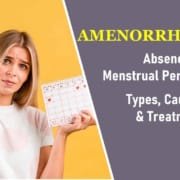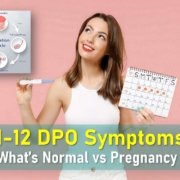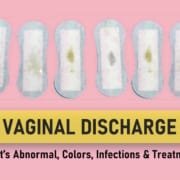Premenstrual Dysphoric Disorder (PMDD): Symptoms, Causes, and Treatments
Premenstrual Dysphoric Disorder (PMDD) is a severe form of premenstrual syndrome (PMS) that affects both the physical and emotional well-being of individuals in the days leading up to menstruation. While many people experience the typical symptoms of PMS, such as bloating, headaches, and mild mood swings, PMDD is more intense and can significantly impair daily functioning. This disorder can manifest with extreme anxiety, depression, and even suicidal thoughts, making it crucial for individuals to seek timely medical intervention.
What is Premenstrual Dysphoric Disorder (PMDD)?
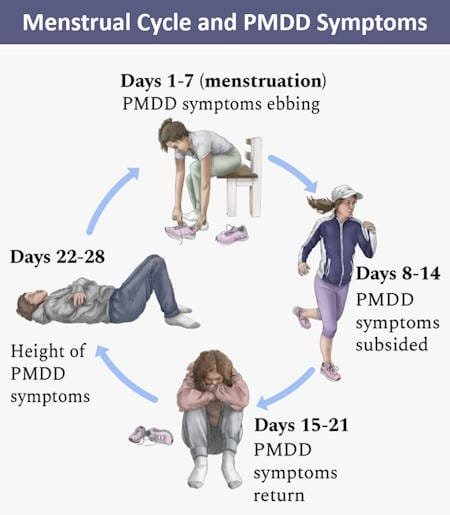
Premenstrual Dysphoric Disorder (PMDD) is a chronic condition that causes intense emotional and physical symptoms in the days or weeks leading up to menstruation. Though it shares similarities with premenstrual syndrome (PMS), PMDD is much more severe. Individuals with PMDD may experience typical PMS symptoms like bloating and breast tenderness but also suffer from significant emotional distress, such as heightened irritability, anxiety, or depression. In extreme cases, individuals with PMDD may have suicidal thoughts.
These symptoms generally appear during the luteal phase, which is the period after ovulation and before menstruation, and subside within a few days after menstruation begins. PMDD can severely impact an individual’s quality of life, disrupting work, relationships, and daily activities.
How Common is PMDD?
PMDD affects between 3% to 8% of individuals with regular menstrual cycles. In comparison, PMS is more common, affecting up to 75% of menstruating individuals. While the exact cause of PMDD remains unclear, it is believed to result from a sensitivity to hormonal fluctuations, particularly the changes in estrogen and progesterone levels that occur after ovulation. PMDD can affect individuals from all socioeconomic, cultural, and ethnic backgrounds.
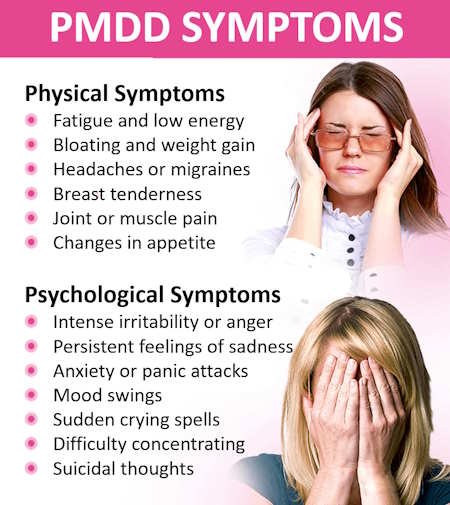
Symptoms of PMDD
The symptoms of PMDD can vary in intensity from person to person. These symptoms typically begin about one to two weeks before menstruation starts and usually resolve a few days after the onset of the period. While the symptoms overlap with those of PMS, the emotional and psychological impact is far more severe in PMDD. Common symptoms include:
- Emotional and Psychological Symptoms of PMDD:
- Intense irritability or anger.
- Persistent feelings of sadness or hopelessness.
- Anxiety or panic attacks.
- Mood swings and sudden crying spells.
- Difficulty concentrating or focusing.
- Suicidal thoughts or behavior.
- Physical Symptoms of PMDD:
- Fatigue and low energy.
- Bloating and weight gain.
- Headaches or migraines.
- Breast tenderness.
- Joint or muscle pain.
- Changes in sleep patterns (insomnia or excessive sleep).
- Changes in appetite (food cravings or binge eating).
These symptoms can significantly interfere with daily life, affecting work, relationships, and overall well-being.
Causes of PMDD
The exact cause of PMDD remains unclear, but it is thought to result from an abnormal response to the natural hormonal changes that occur during the menstrual cycle. These hormonal shifts may lead to a deficiency in serotonin, a chemical naturally present in the brain and intestines that plays a role in narrowing blood vessels. Serotonin also influences mood and can contribute to the physical symptoms associated with PMDD. Some individuals are more sensitive to hormonal changes, which may explain why only a small percentage of those who experience PMS develop PMDD.
Risk Factors for PMDD
Certain factors may increase the likelihood of developing PMDD, including:
- Personal or Family History of Depression or Anxiety: Individuals with a history of mental health conditions, including depression, anxiety, or mood disorders, are more likely to develop PMDD.
- Personal or Family History of PMS: A family history of PMS or PMDD may increase the risk of developing PMDD.
- Trauma or Stressful Life Events: Those who have experienced trauma, abuse, or other significant stressors may be more susceptible to PMDD.
Complications of PMDD
If left untreated, PMDD can lead to serious complications, including severe depression and suicidal ideation. The emotional distress caused by PMDD can strain personal relationships, affect job performance, and significantly lower the quality of life. Individuals with PMDD are also at a higher risk of developing other mood disorders, such as major depressive disorder.
It is essential for individuals experiencing suicidal thoughts or extreme emotional distress to seek immediate medical attention. In the U.S., you can call or text the Suicide and Crisis Lifeline at 988 for confidential support 24/7.
Diagnosis of PMDD
Diagnosing PMDD requires a thorough evaluation of an individual’s medical history and symptoms. Healthcare providers often ask individuals to track their symptoms for at least two menstrual cycles to confirm the diagnosis. The diagnosis of PMDD is made when an individual experiences at least five PMDD symptoms, including at least one mood-related symptom.
Healthcare providers must also rule out other conditions that could cause similar symptoms, such as generalized anxiety disorder, major depressive disorder, or reproductive disorders. Tracking the timing and severity of symptoms can help distinguish PMDD from other conditions.
Treatment for PMDD
There are several treatment options for managing PMDD, and the best approach depends on the severity of the symptoms and the individual’s overall health. Common treatments include:
1. Antidepressants (SSRIs)
Selective serotonin reuptake inhibitors (SSRIs), such as sertraline, fluoxetine, and paroxetine, are commonly prescribed to help regulate serotonin levels in the brain. SSRIs are often effective in reducing both emotional and physical symptoms of PMDD.
2. Hormonal Birth Control
Hormonal birth control pills that contain drospirenone and ethinyl estradiol can help stabilize hormone levels and reduce PMDD symptoms. These pills prevent ovulation, thereby reducing the hormonal fluctuations that contribute to PMDD.
3. Dietary and Lifestyle Changes
Making certain dietary changes can help alleviate some symptoms of PMDD. These include:
- Reducing caffeine, alcohol, and sugar intake.
- Increasing the consumption of complex carbohydrates, which can improve mood.
- Taking supplements such as vitamin B6 and magnesium, which may help ease bloating, irritability, and mood swings.
4. Over-the-Counter Pain Relief
Non-prescription pain relievers like ibuprofen or acetaminophen can be used to manage cramps, headaches, and breast tenderness.
5. Regular Exercise
Physical activity, particularly aerobic exercises like walking, swimming, or cycling, can boost mood and reduce fatigue. Exercise also helps manage stress and improve overall well-being.
6. Stress Management Techniques
Practices such as deep breathing exercises, meditation, and yoga can help individuals manage the stress and anxiety that often accompany PMDD.
Natural Management of PMDD
While there is no “cure” for PMDD, some individuals find relief through natural methods that complement medical treatments. These strategies include:
- Practicing mindfulness and yoga to reduce stress and improve emotional resilience.
- Engaging in support groups to connect with others who have PMDD.
- Dietary modifications, such as increasing the intake of omega-3 fatty acids, which may improve mood and reduce inflammation.
Can PMDD Be Prevented?
While there is no definitive way to prevent PMDD, managing existing mental health conditions such as anxiety or depression may reduce the likelihood of developing PMDD. For some individuals, treatment may involve both psychological and medical approaches. However, because PMDD is linked to the body’s hormonal cycle, prevention may not always be possible. Early intervention and treatment can significantly improve quality of life.
Outlook for Individuals with PMDD
With proper treatment, most individuals with PMDD experience a significant reduction in symptoms and are able to manage the condition effectively. Although PMDD is a chronic disorder, symptoms often subside after menopause. Many individuals find relief through a combination of medication, lifestyle changes, and emotional support.
When to Seek Medical Attention
Individuals with PMDD should seek medical attention if they experience:
- Persistent feelings of anxiety or panic.
- Suicidal thoughts or thoughts of harming oneself.
- Extreme mood swings or uncontrollable anger.
- Feelings of hopelessness or despair.
Early diagnosis and treatment are critical to managing PMDD effectively. Don’t hesitate to consult a healthcare provider if you suspect you may have PMDD.
Frequently Asked Questions (FAQ) About PMDD
What’s the difference between PMS and PMDD?
PMS and PMDD both occur in the week or two before menstruation, but PMDD is much more severe. While PMS can cause physical symptoms like bloating and mood changes, PMDD causes extreme emotional and psychological symptoms, including depression and suicidal thoughts.
When does PMDD start in your cycle?
PMDD symptoms typically begin during the luteal phase of the menstrual cycle, which occurs after ovulation, around 10 to 14 days before your period starts. These symptoms usually subside within the first few days of menstruation.
At what age does PMDD usually start?
PMDD can start at any time during a woman’s reproductive years, but it often begins in the late 20s to early 30s. Symptoms may become more noticeable as hormonal fluctuations increase with age.
Can PMDD cause pain during sex?
PMDD can cause mood swings, irritability, and physical discomfort that might make sex less enjoyable. However, the disorder does not directly cause pain during sex. If pain occurs, it could be due to other factors like hormonal changes or underlying reproductive issues.
How can I manage PMDD naturally?
While there’s no cure for PMDD, some individuals find relief through natural methods such as exercise, dietary changes, mindfulness, and yoga. Always consult your healthcare provider before making significant changes to your treatment plan.
Is PMDD considered a mental illness?
Yes, PMDD is classified as a depressive disorder in the DSM-5, which is used to diagnose mental health conditions. It involves severe mood changes related to the menstrual cycle.
Can PMDD lead to other mental health issues?
If left untreated, PMDD can lead to other mental health issues, including major depression and suicidal ideation. Early intervention is essential for preventing complications.
To Sum Up
Premenstrual Dysphoric Disorder (PMDD) can significantly impact both physical and emotional well-being of women. By understanding the symptoms and treatment options for PMDD, individuals can take steps toward managing this condition effectively. Effective management involves a combination of treatments, including lifestyle changes, medications, and stress management techniques. Early diagnosis and intervention are key to improving quality of life for those affected by PMDD. If you’re experiencing severe symptoms, consulting a healthcare provider is essential for finding the most suitable treatment plan.




